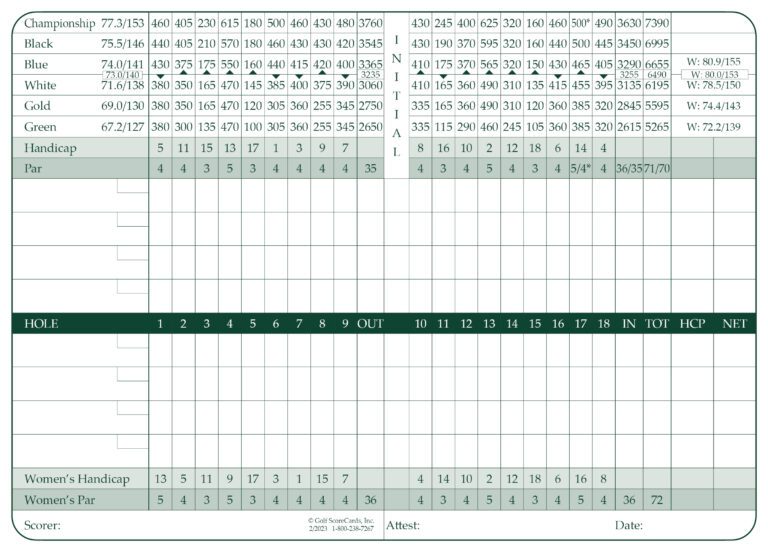East Course
Newly Restored. Forever Adored.
Designed by Donald Ross in the 1920s, the East Course has been host to several major championships including the PGA Championship, the Senior PGA Championship, the Ryder Cup, the U.S. Open, the U.S. Amateur and the U.S. Senior Open.
"It is the best, fairest and toughest championship golf course I've ever played in all my years as a tour professional."
Ernie Els - Former #1 ranked player in the world
In the 1970s, the Club reached out to George and Tom Fazio to assist in modernizing the East Course in order to continue its legacy as a host of major championships. While these changes created a more challenging layout for the several major championships that followed, the redesigned holes were a focus of significant criticism since they did not fit Ross’ original vision.
In addition, hundreds of trees that were planted over the decades had become overgrown and changed the nature of the original Ross layout and impacted shot selection and strategy.
East Course Restoration
The East Course Restoration Project started with an initial focus on rebuilding the East Course greens and bunkers. The Club hired Andrew Green of A. H. Green Design to develop a long-range plan for the East Course that identified the additional objectives to add length where possible; create forward tees; expand cupping areas on the greens; and evaluate options for the holes that had been changed from the original Donald Ross design.
The Highlights
- Every green on the East Course has been rebuilt to USGA specifications for improved turf quality and drainage using sod grown specifically to Oak Hill’s specifications
- Certain green contours have been modified to provide more options for pin placements
- All of the East Course bunkers have been rebuilt with improved drainage and a refined, but rugged look, that is consistent with a Ross design
- Strategic tree removals were part of the project with an emphasis on adequate sun exposure to both tees and greens while showcasing the majestic specimen of trees that grace the property
- The restoration includes new bunkering and tee extensions which will allow the course to play up to 7,360 yards from the Championship tees
Ben Hogan once called this hole the toughest opening test in championship golf. The opening tee shot is from an elevated tee to a slight dogleg left. A great drive can take advantage of a fairway down slope at the 290 yards. Allens Creek runs across the fairway hole at the 360 mark. The danger off the tee is out of bounds to the right and three bunkers on the left. The green is well guarded by grass hummocks and a greenside bunker short right.
A precise tee shot is needed on this short par-4 due to the severely narrow fairway and deep fairway bunkers on both sides. The elevated green slopes severely from back to front. An approach shot below the hole gives the player the best chance for a birdie. Jason Dufner holed out his approach for eagle in 2013 to help secure the 2013 PGA Championship.
The first par-3 requires a shot with a mid or long iron to a green that slopes predominately from back to front. Three deep bunkers guard the green in front. A ball that lands on the front third of the green has a minimal chance of staying on due to an aggressive false front.
The only par-5 on the front requires a very precise tee shot to have a chance of reaching the green in two. Bunkers and out of bounds guard the right side while trees run along the left. The green slopes from back to front with deep bunkers short-left and short-right guarding the green.
A two-tiered green surrounded by four deep bunkers requires an accurate tee shot to have a chance at birdie. A shot that misses long will make it very challenging to save par. When planning an approach, pay attention to the hole location to ensure the best chances for a scoring opportunity.
This long par-4 doglegs slightly to the right, with fairway bunkers on the left and water up the right. An exacting tee shot is a must to have a chance at hitting this green in regulation. Allens Creek meanders across the fairway and protects long and left of this multi-tiered green complex. A thoughtful approach shot depending on the hole location is needed for any opportunity for a birdie.
With Allens creek winding up the right side of the hole then crossing the fairway, plus a thick strand of trees left, this tee shot must be carefully placed. Many players may use a fairway wood or long iron to ensure safety off the tee. The approach shot is uphill to one of
the most challenging greens on the course.
Compared to the previous two holes, the driving area is rather generous. The fairway zig gags between a bunker on each side that could provide challenge on an errant tee shot. Three deep greenside bunkers guard this rather large green.
The par-4 ninth is a tough uphill dogleg right with a fairway that narrows the farther up a tee shot goes. Any drive on the right side runs the risk of out of bounds or being blocked out by overhanging trees. The approach shot is likely a mid-iron to a green that slopes from back to front. Missing long or left could provide a challenging up and down for par.
The fairway on this par-4 tenth slopes severely downhill at the 275-yard mark towards Allens Creek that crosses the fairway at 350 yards. Two greenside bunkers short and a run-off area on the back left corner forces players to aim for the middle of the green. Shots
finding the putting surface will leave players with a good look at birdie as this is one of the flattest greens on the course.
This long par-3 is surrounded by three greenside bunkers, one short-left and two long right, along with Allens Creek protecting the front right hole location. A large green offers a variety of hole locations which forces the player to be precise in their plan of attack; this can be a tall order from 245 yards.
A short uphill par-4 with trees on both sides requires an accurate tee shot. A small right fairway bunker demands a carry of a least 285 yards. The short approach shot is hit to a green that slopes from back left to front right with three greenside bunkers guarding the front.
Oak Hill’s most notable par 5 heads back uphill towards the clubhouse. Allens creek crosses the fairway at the 325 mark, which will force most players to layup short. A tee shot short of Allens Creek leaves the player with 300 yards to the hole uphill. Two fairway bunkers guard the right side of the fairway 125 yards out. The green sits in a hollow, providing patrons a beautiful amphitheater setting.
The shortest par-4 on the course will provide the player with a risk-reward decision to lay up or go for the green off the tee. Individuals who layup short of the green must avoid the two fairway bunkers on the left, and one on the right. Those who decide to go for the green may be pleased to have their ball land in one of the three greenside bunkers. Any shot that misses long will provide the toughest of all finesse wedge shots, as this green slopes severely from back to front.
The shortest of the par 3’s at Oak Hill is no walk in the park. Short and left are deep bunkers that will make for a difficult up-and-down should the player find them off the tee. A tightly mown run-off area right of the green drops off dramatically in elevation, leaving the player with a tough shot from a very tight lie to this multi-tiered green.
A well hit tee shot will take advantage of a slope in the fairway at the 275-yard mark leaving the player with a short shot into a receptive green. Two bunkers line the right side of the fairway: the first at 280, the second at 330. A miss left or long of the green will roll away significantly due to the tightly mown run-off area.
A par 5 for the membership becomes a long par 4 for the Championship. The tee shot must go at least 280 to provide a full view of the green. Errant tee shots right will provide serious trouble for the players looking for a birdie coming down the stretch. An undulated green will force players to be precise with their landing spots depending on the hole location. A miss long left will send the ball away from the green, challenging the player with a tough shot from a tight lie.
A hole steeped in Championship tradition. Shaun Micheel won the 2003 PGA Championship by hitting his approach shot to 3 inches to secure victory and Nick Faldo got up and down from 92 yards to save par and help secure the Ryder Cup for the European team in 1995. Hole #18 is equally beautiful as it is demanding; the fairway is only 20 yards wide at the 300-yard mark. Three deep bunkers guard the right side off the tee, along with trees on both sides. The green slopes severely from back to front with three bunkers right
and one on the left, likely proving to be a very challenging finish.
Course photos by Evan Schiller Photography




















